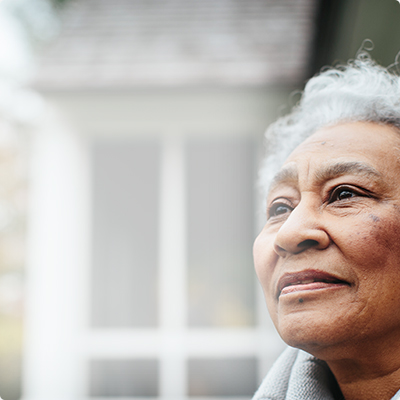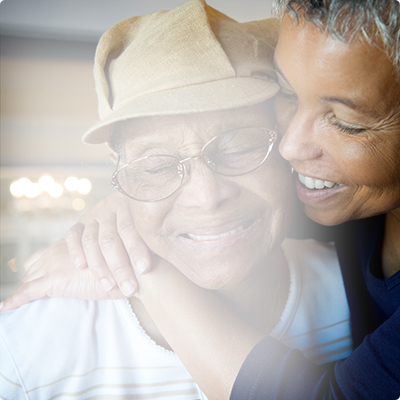Incontinence
As Alzheimer’s disease progresses, it is common for incontinence of the bladder and bowels to occur, particularly in the middle and late stages. There are many causes, as well as ways to help manage incontinence. How you respond can help the person living with dementia retain a sense of dignity.
Causes of incontinence
Incontinence can be caused by the inability to recognize the need to use the restroom, forgetting where the bathroom is and side effects from medicine.
If a person living with Alzheimer’s or other dementia has recently started to lose control of his or her bladder and bowels, the first and most important step is to determine the possible causes.
Medical conditions that can cause incontinence
Consult a physician to determine if the cause is medical and treatable.- Urinary tract infection, constipation or a prostate problem.
- Diabetes, stroke or a muscular disorder such as Parkinson’s disease.
- Physical disabilities that prevent reaching the bathroom in time.
Medications and diuretics that can cause incontinence
- Sleeping pills and anxiety-reducing drugs that may relax the bladder muscles
- Drinks like cola, coffee and tea can act as diuretics, which increase urination.
Environment and clothing obstacles that can contribute to incontinence
- Make sure it’s easy to locate and identify the bathroom.
- Create a path to the bathroom that is well lit and obstacle-free.
- Wear clothes that are easy to put on and remove.
Dehydration
Don’t limit fluids. This could cause dehydration, which could lead to a urinary tract infection and increased incontinence.Tips for managing incontinence
Although incontinence typically occurs in the middle or late stages of Alzheimer’s, every situation is unique. The following tips can help caregivers of people living with Alzheimer’s who are experiencing incontinence.
Understand
-
Bladder and bowel accidents can be embarrassing. Find ways to preserve dignity. For example say, “Anyone can have an accident” instead of saying, “You wet yourself.”
-
Be matter-of-fact; don’t scold or make the person feel guilty.
-
Respect the need for privacy as much as possible.
-
Get more help if you are affected by this issue. Call us at 800.272.3900 or join ALZConnected, our online support community where caregivers like you share tips for managing incontinence.
Communicate
-
Encourage the person to tell you when he or she needs to use the toilet.
-
Watch for nonverbal cues, such as restlessness, making unusual sounds or faces, pacing, sudden silence or hiding in corners. These cues may indicate the need to use the toilet. Use adult words rather than baby talk to refer to using the toilet.
-
Learn the person’s trigger words or phrases for needing to use the toilet. The person may use words that have nothing to do with toileting (e.g., “I can’t find the light”), but to that person, it means going to the bathroom. Communication challenges often increase in the late stage of the disease.
-
Some people do well when they are reminded to go to the bathroom on a regular schedule, perhaps every two hours.
Make it easy to find the bathroom and use the toilet
-
Keep the bathroom door open so the toilet is visible.
-
Put a picture of a toilet on the bathroom door.
-
Paint the bathroom door with a color in contrast to the wall.
-
Make the toilet safe and easy to use. For example, raise the toilet seat, install grab bars on both sides of the toilet and use night lights to illuminate the bedroom and bathroom.
-
Consider a portable commode or urinal for the bedroom.
-
Remove plants, wastebaskets and other objects if mistaken for a toilet.
Plan ahead
-
Observe and recognize the person’s routine toilet schedule.
-
Provide a reminder to use the bathroom just before his or her usual time.
-
Try setting a regular schedule for toilet use. For example, help the person to the bathroom first thing in the morning, every two hours during the day, immediately after meals and just before bedtime.
-
Identify when accidents occur, then plan for them. If they happen every two hours, get the person to the bathroom before that time.
Follow up
-
Check the toilet to see if the person has used it.
-
Help the person wipe and then flush the toilet as needed.
-
Regularly wash sensitive skin areas.
Monitor fluids
-
Encourage overall fluid intake, but limit the fluid intake before bedtime.
-
Cut down on drinks that stimulate urination, like cola, coffee or tea.
Adjust and innovate
-
Choose clothing that is easy to remove and to clean.
-
Consider using padded undergarments or adult briefs. Even if a person doesn’t need them ordinarily, they can be helpful when you’re in a place where getting to a toilet might be difficult.
-
Give the person plenty of time to empty his or her bladder and bowels.
-
If the person has difficulty urinating, run water in the sink or give the person a drink for stimulation.
-
Use waterproof mattress covers, incontinence pads or both on the person’s bed to help keep fluid from soaking into the mattress.

Connect with our free, online caregiver community.
Join ALZConnected
Our blog is a place to continue the conversation about Alzheimer's.
Read the Blog
